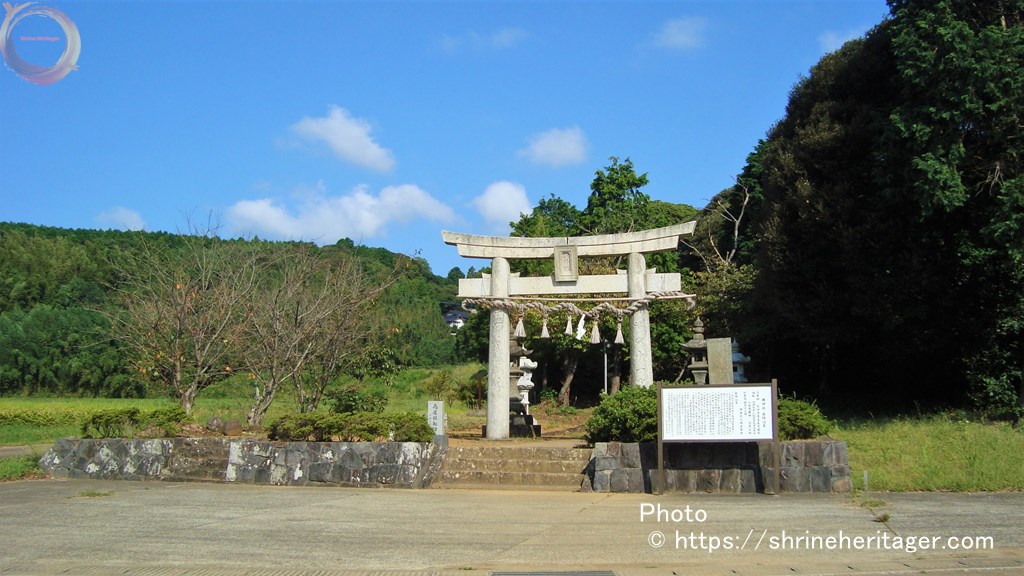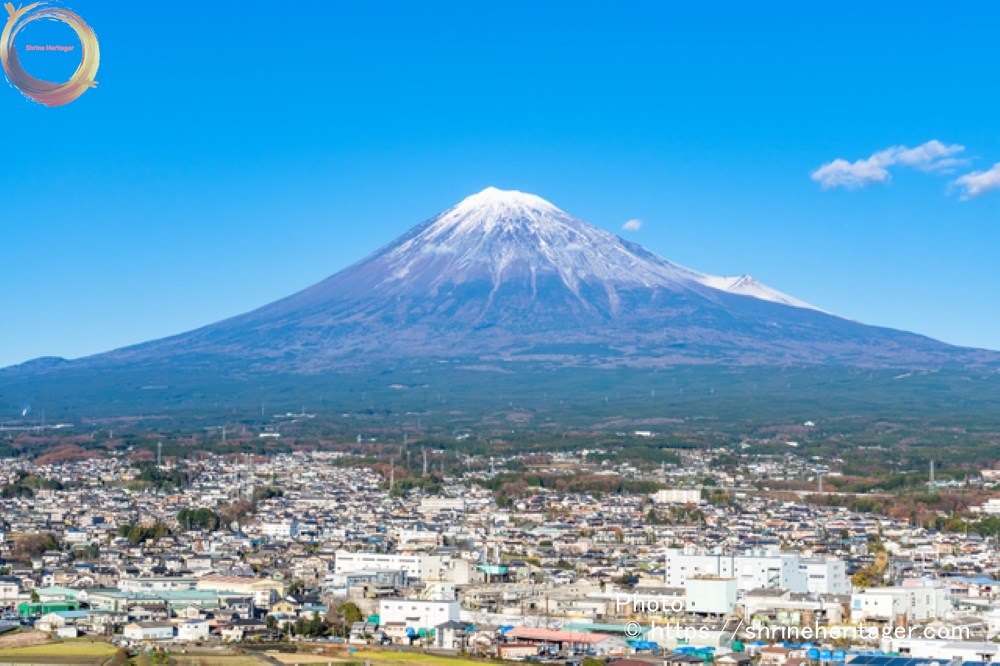Kou shrine sits right next to the "Harunotsuji Ruins", the site of the royal capital of Ikikoku (Ikikuni) when Iki was in the royal era. It is called "Ichinomiya" At present, the theory that "Iki Kuni Ichinomiya" is this shrine is predominant.
目次
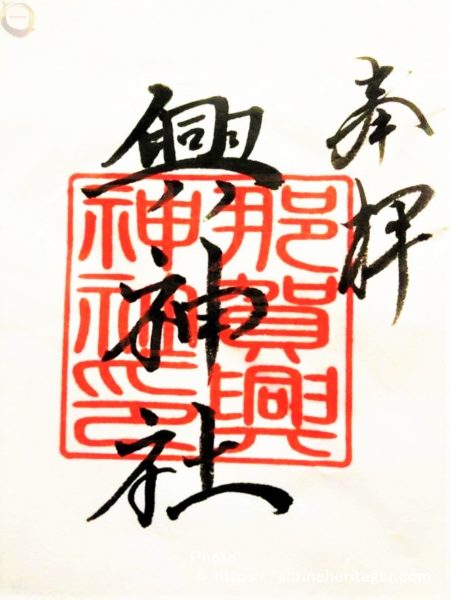
1.ご紹介(Introduction)
The official name of this shrine and how to be called The present address and map I will introduce the history of the god and the shrine enshrined.
【神社名(shrine name)】
興神社(ko shrine)
[読 み (How to read)]
(こうじんじゃ)
[通称名(Common name)]
一の宮(ichi no miya)
【鎮座地 (location) 】
Yudake Koto 676-1, Ayabe Town, Sanuki City, Nagasaki Prefecture
[地 図 (Google Map)]
【御祭神 (God's name to pray)】
《主》足仲彦尊(tarashi nakatsuhiko no mikoto)(第14代仲哀天皇)
息長足姫尊(okinaga tarashi hime no mikoto)(神功皇后)
応神天皇(nintoku tenno)
仁徳天皇(nintoku tenno)
天手力男命(ameno dajikarawo no mikoto)
八意思兼命(yaomoikane no kami)
住吉大神(sumiyoshi no okami)
【御神格 (God's great power)】
・安産育児 Safe childbirth and childcare
・等 etc
【格 式 (Rules of dignity) 】
・『延喜式神名帳(engishiki jimmeicho)』所載社
・ 壱岐国一之宮
・ 壱岐国七社
【創 建 (Beginning of history)】
"Uchiuchisha" "Formerly Nakamura Murasha Nanasha"
Hirohito 2nd year (811) Was founded by accepting the Shinto of the Niswa.
In the era of the 鑰, it was a place to pay the seal of the government office (鑰 and the national government office, so it is said that there is a company name of Daimingjin.
There is also a theory that this shrine is the first shrine in Sanuki Country, because it is a national government and there is a Sosha Shrine nearby.
In the Iki Meikatsu chart magazine, it is said that "the best shrine in Iki 鑰 is the seal of Ishida-gun."Excerpts from "Visiting the Shrine of Sanuki, the Island of the Gods"
【由 緒 (history)】

History of the History of Ko Shrine
主祭神 足仲彦尊・息長足姫尊
相 殿 應神天皇・仁徳天皇・天手力男命・八意思兼神・住吉大神
April 13th, Kamiyuki ceremony Dai kagura conseistring
History of the veseed
The Company is the Iki-Ishida-gun Ko Shrine, which is listed in the Enki-style Tenth Volume Shinmei Book.
They say to the company's record At Ichinomiya Kokusha in Iki Ikya-go Kunina Village (Yudake Village)
Moreover, it is said that 鑰 referred to as The Great Ming God of the mark because 鑰 of the political office of the government office was paid.One, in the god clearly, it is said that there is a Shrine in 鑰 before Komura, and the Daimyegami-style inner shrine.
1. In the shrine book, there is a Yudake village Kuboto Ko Shrine Ichinomiya
In the 24th seat of the ceremony, there is a hoden worship hall, and the shinto lord Yoshino Nonojin andIn October 2000 (1200 years ago), Emperor Hirohito Tsuji
Emperor Buntoku's first year of Ninju (1140 years ago) was ranked sixth.
After that, each first floor is advanced by ten times.1. Reconstruction of the Treasure Hall in 9 years (440 years ago)
Matsuura Hizen Mamoru There is a building tag of Mr. Takanobu Minamoto1, 13th year of the same year, the reconstruction of the shrine, Matsuura Hizen Mamoru, Mr. Takanobu Minamoto
1, Kei'an 2nd year (340 years ago) Kokushi Matsuura Hizen Mamoru Jinshin Ko Ki kagami and stone forehead dedication
1. In the company record, on the eve of the festival day, Dai kagura, on the next festival day, the national name fee
There is a tribute of military equipment and mint, and it is written that it is possible to go to the shrine of the woman pond.One of the seven sanuki companies in the village shrine on December 4, Meiji 9
1. Meiji 40 饌 designated as the Mint Offering Shrine
(The Great Encyclopedia Memorial Project in 1990)
From the precincts guide board
【境内社 (Other deities within the precincts)】
There's a kite.
スポンサーリンク
この神社の予備知識(Preliminary knowledge of this shrine)
This shrine has a long history.
『延喜式神名帳(engishiki jimmeicho)The two volumes that are regarded as important among all 50 ritual- style scrolls created by the Imperial Court during the middle Heian period are called " engishiki jimmeicho " (edited in December 927). Approximately 1100 years ago, the name of "2861 company" and the number of gods enshrined there are listed in the list of government offices (shikinaisha) nationwide.
【延喜式神名帳】(engishiki jimmeicho)The shrine record was completed in December 927 AD.
It is a specific company of two Uchiuchisha.
[旧 行政区分](Old administrative district)
(神様の鎮座数)西海道 107座…大38・小69
[旧 国 名 ](old county name)
(神様の鎮座数)壱岐島 24座(大7座・小17座)
[旧 郡 名 ](old region name)
(神様の鎮座数)石田郡 12座(大3座・小9座)
[名神大 大 小] 式内小社
[旧 神社名 ] 與(与)神社
[ふ り が な ](よの かみのやしろ)
[How to read] (yo no kamino yashiro)
https://www.digital.archives.go.jp/DAS/meta/listPhoto?LANG=default&BID=F1000000000000004146&ID=M2014101719562090086&TYPE=&NO=画像利用
国立国会図書館デジタルコレクション 延喜式 刊本(跋刊)[旧蔵者]紅葉山文庫
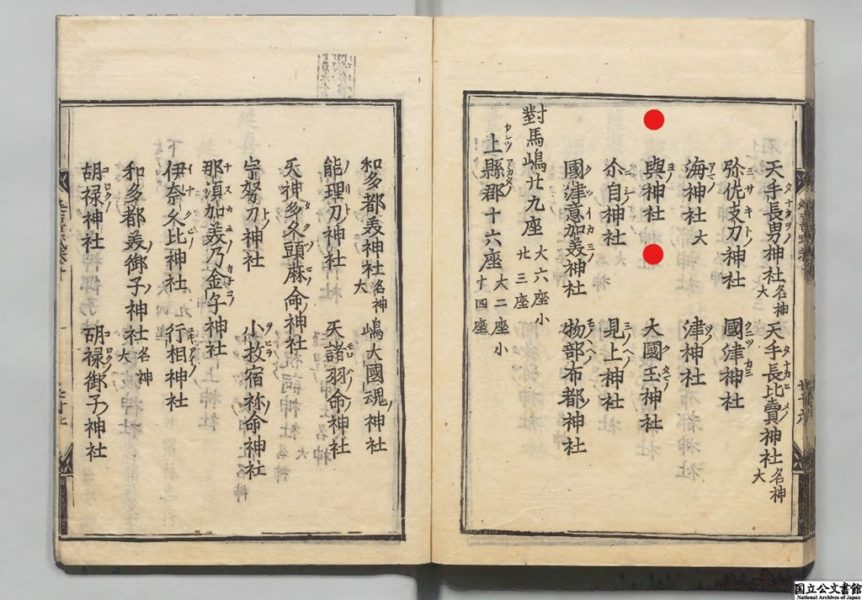
[旧 行政区分](Old administrative district)
(神様の鎮座数)西海道 107座…大38・小69
[旧 国 名 ](old county name)
(神様の鎮座数)壱岐島 24座(大7座・小17座)
[旧 郡 名 ](old region name)
(神様の鎮座数)石田郡 12座(大3座・小9座)
[名神大 大 小] 式内 名神大社
[旧 神社名 ] 天手長男神社(名神大)
[ふ り が な ](あめのたなかをの かみのやしろ)
[How to read] (ameno tanakawo no kamino yashiro)
https://www.digital.archives.go.jp/DAS/meta/listPhoto?LANG=default&BID=F1000000000000004146&ID=M2014101719562090086&TYPE=&NO=画像利用
国立国会図書館デジタルコレクション 延喜式 刊本(跋刊)[旧蔵者]紅葉山文庫
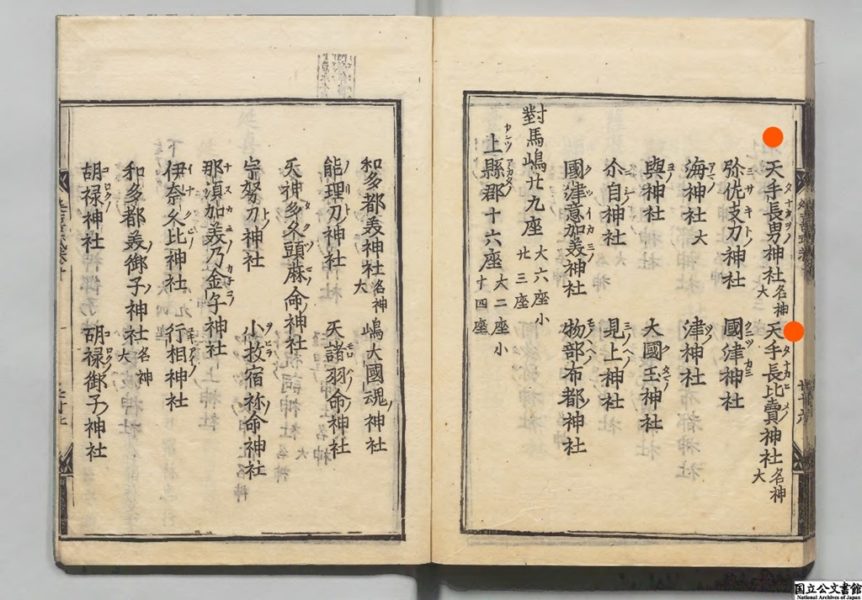
【オタッキーポイント】(Points selected by Japanese Otaku)
I will introduce the preliminary knowledge that you will be interested in this shrine from a otaku's point of view.
Ko shrine (ko shrine) is said to be the original Ikikuni Ichinomiya
The shrine in Sanuki has been devastated by two marshals during the Kamakura period.
It seems that it was also difficult to trace the traces.
When the Shinto artist "Tachibana Mitsuyoshi" of the Hirado Domain, famous for the author of "The Pilgrimage of The Nations Ichinomiya" written in the Edo period, surveyed the Uchiuchi shrine in Sanuki in 1676, the Company was compared to the Uchiuchi Taisha Shrine.
However, in the survey conducted by Tachibana Sanki, it is said that most of the cases in the case of Sanuki Island are considered to be aggressive associations, and that the ratio of the Uchiuchisha on the island caused further confusion.
According to the survey conducted by Uchiuchisha at this time, the Tente-son Shrine in Iki Kuni Ichinomiya was compared to the Wakamiya Shrine (now Tentedo-cho Shrine) in gonoura-cho Tanaka-touch in Sanuki City.
However, in recent studies, this judgment is thought to be due to the mistake of ko and Yu, and the theory that Uchiuchi Meijin Taisha "Ten te eldest son shrine" is our company and "Ikikuni Ichinomiya" has become powerful.
On the other hand, as a leading debate company of Uchiuchisha "Yo Shrine", it is said to be "Fukae Shrine" of Eiko Fukae.
See also the article "Fukae Shrine"
It sits right next to the ruins of the ruins of the ruins of the royal capital of Iki.
About 1km to the east of Xing Shrine, there is the "Hara no Tsuji Ruins" which is said to have been the royal capital of Iki Country, and now the Ichifukoku Museum is built.
It is said that the national government of Sanuki in the era of the Rule of Law was also near here, and the company name "Kofu-ko" means "kofu-ko".
Because I kept "Innyak" which 鑰 the key of the store of the national government, it was 鑰 "Innyak Shrine" in the recent century.
From before the four-year survey of Yanbao to the present, our company is commonly referred to as the "Ichinomiya."
It is one of the seven companies in Iki country (Iki seven companies), but it is not a member of the "Japan's Best Miyakai"
The Iki City Museum of One Branch is listed on the website as follows:
From the invitation of Enki 5 in 905
770 years until the assessment of Uchisha by Tachibana Sanzen in 1676 (Yonbao 4)
The 鑰 enshrined the Imperial Palace Daimingjin.Even now, the torii stone 鑰 written "Indo-no-Miya" is enshrined in a small shrine in the precincts. It 鑰 a shrine that enshrines the "鑰 of the warehouse where the seal of the national priest is placed.
In Sanuki, it is known that Iki Kokubunji Temple was set up in the Kokubun district of Kuwabe Town in the 8th century, but the location of the national government is not known.
It is 鑰 that the national government has moved to the area around Yudake, which is located in Indonomiya.
There is 覩 castle nearby, so it can be said that it was an important place from the Middle Ages to the early in the early ages.In addition, Ishitorii is a special type in which an anti-increase called "Shikomitorii" warps from the center of Kasagi due to the dedication of the lord Matsuura Jinshin.
From the Iki City Ichipkoku Museum website "Iki's Famous Places"
スポンサーリンク
Visit the Shrine (Pray at the Shrine)
I introduce the state when I visited this shrine.
About 7k car about 10 minutes via
prefectural road No. 173 from The port of Ayabe It is about 5km
northeast of Gonoura Port. If you proceed along Prefectural Road 173, you will find a white torii gate called "One Torii"
Arrived at Ko shrine (ko shrine)
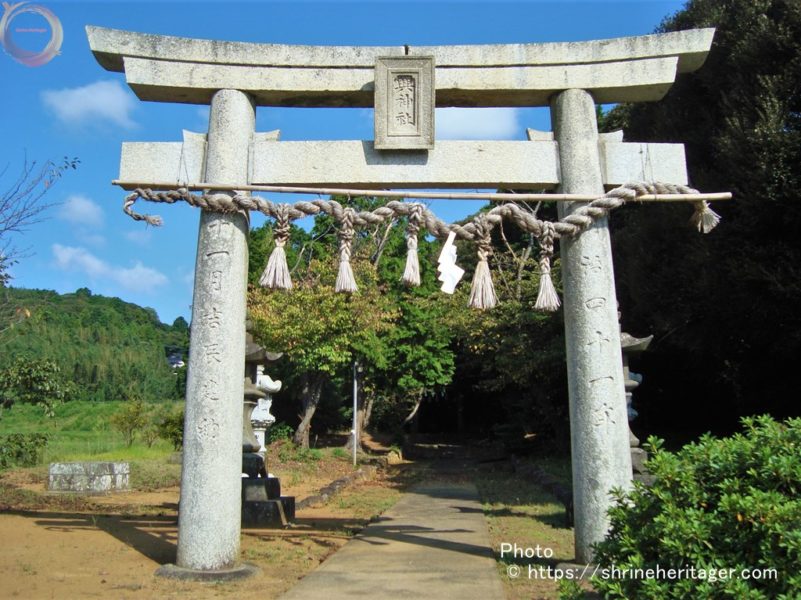
There is a signboard in front
of you. There is "Ko Shrine" in the flat forehead of the torii, and it is written on the pillar that it was built in Meiji 41.
As you go down the
approach into the bushes "Two Torii" is built. This is hizen Torii, which feels old.
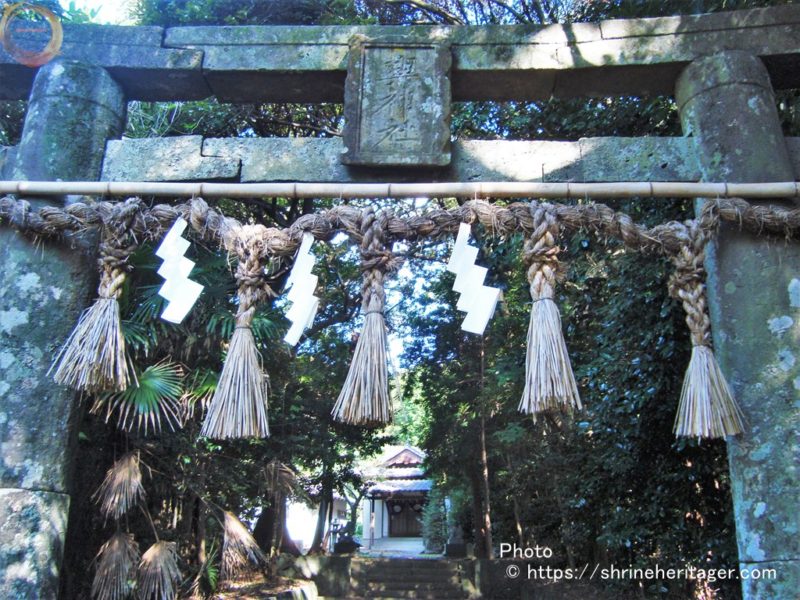
The approach follows the shrine building in a slight arc.
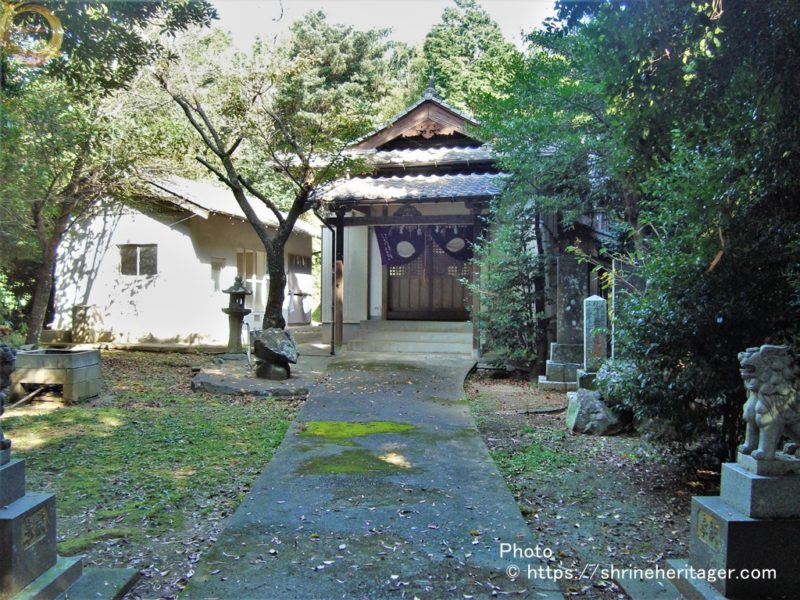
I'm going to the shrine. Open
the glass lattice door, and there's a coin box. The inside of the shrine is paved with tatami mats, and the flat forehead on the central altar contains seven pillars of worship.
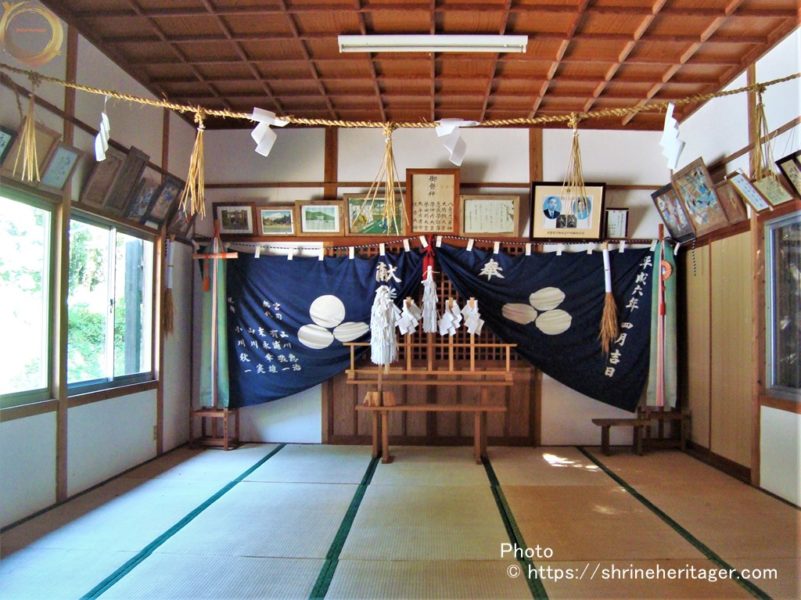
Give me a prayer.
When you reach the god of worship, where you worship God's power, pray with your hands together.
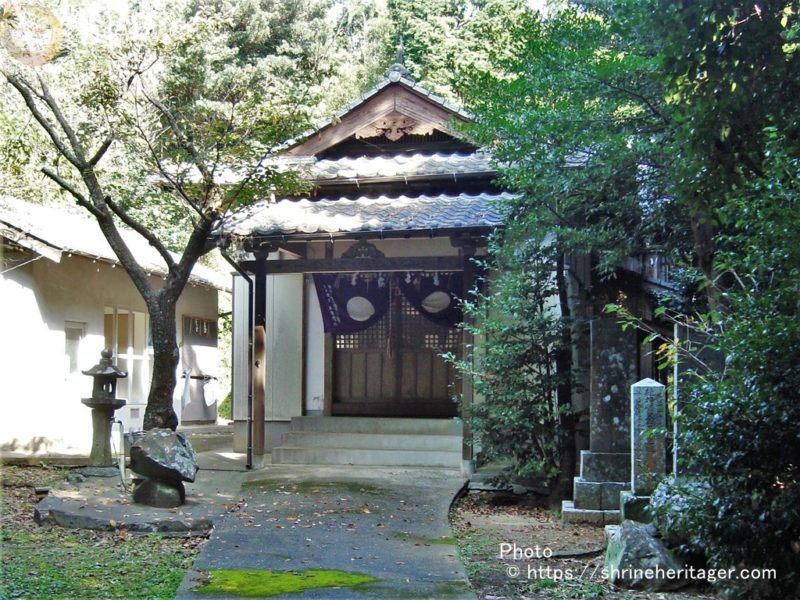
I leave the shrine and go to the main hall in the back (built in 1746), and the coloring is fading, but the color of the middle is used, and it is thought that it was quite beautiful before.
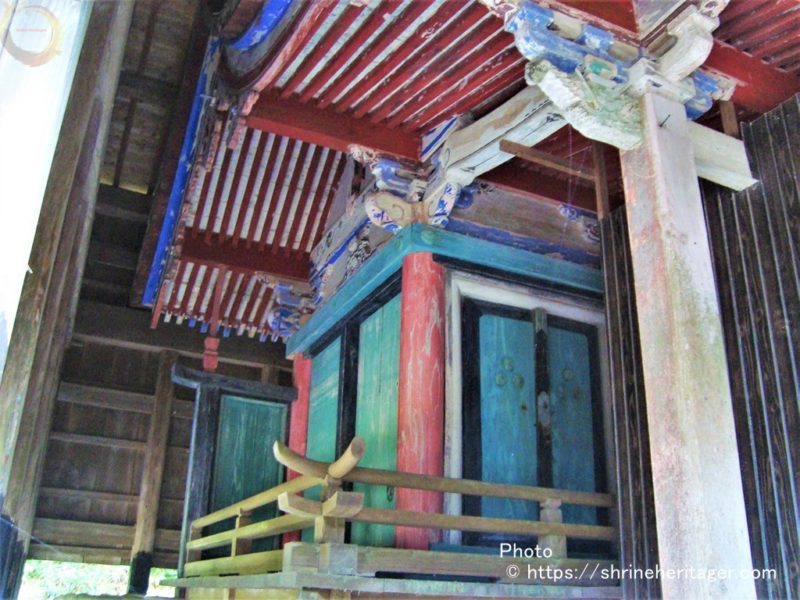
In the bushes on the right side toward the shrine, a torii stone 鑰 "innyaku gu" is placed and a small axe is enshrined.
It is said 鑰 was "a company that enshrines the "鑰 of the warehouse where the seal of the national priest is put" in the remaining name of the former "Shrine".
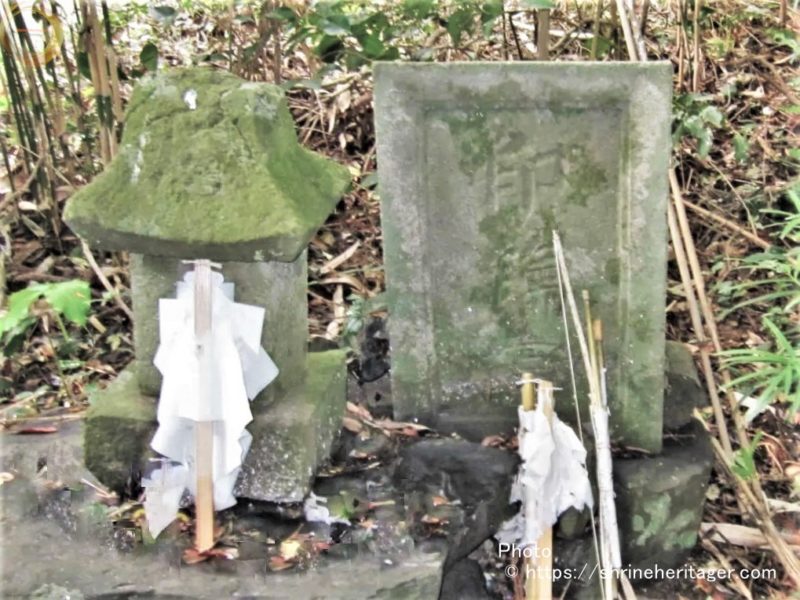
I'm going back on the approach. I looked through the torii gate and bowed.
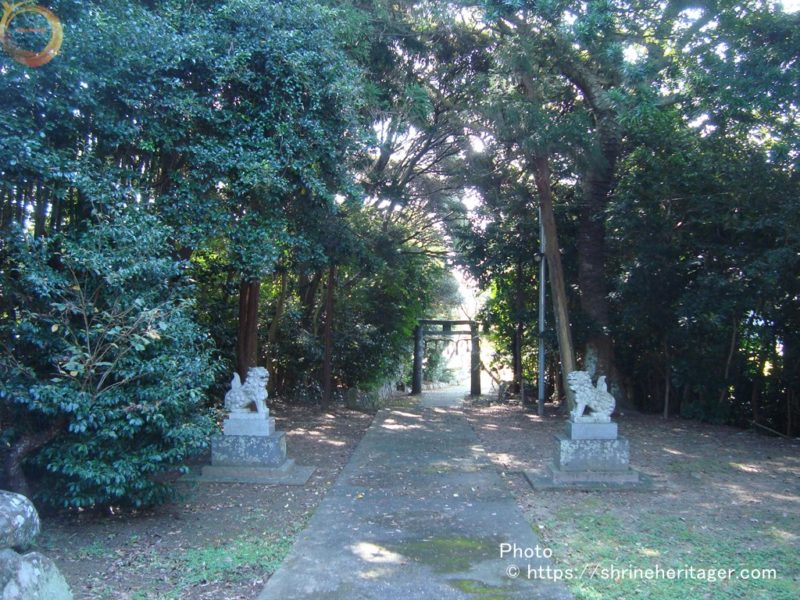
スポンサーリンク
神社の伝承(Old tales handed down to shrines)
I introduce the thing related to this shrine and the literature described.
Tradition recorded in『日本文徳天皇実録(nihon montokutenno jitsuroku)』
The Book of Emperor Buntoku of Japan (completed in 879) is the fifth in the history of the Six Countries.
A history book compiled in the Heian period [Emperor Buntoku's Imperial Month] [3 years of Xiangxiang (850) - 2 years of Tianan (858)] Is also good as Buntoku Jitsuroku which recorded 10 volumes of compilation, Chinese literature, and all 10 volumes
Nordhaven
"From 850 (850) October 23rd, the two gods of Tente's eldest son, Tente Nagabi咩 of Sanuki Island, will be in line at the government office."
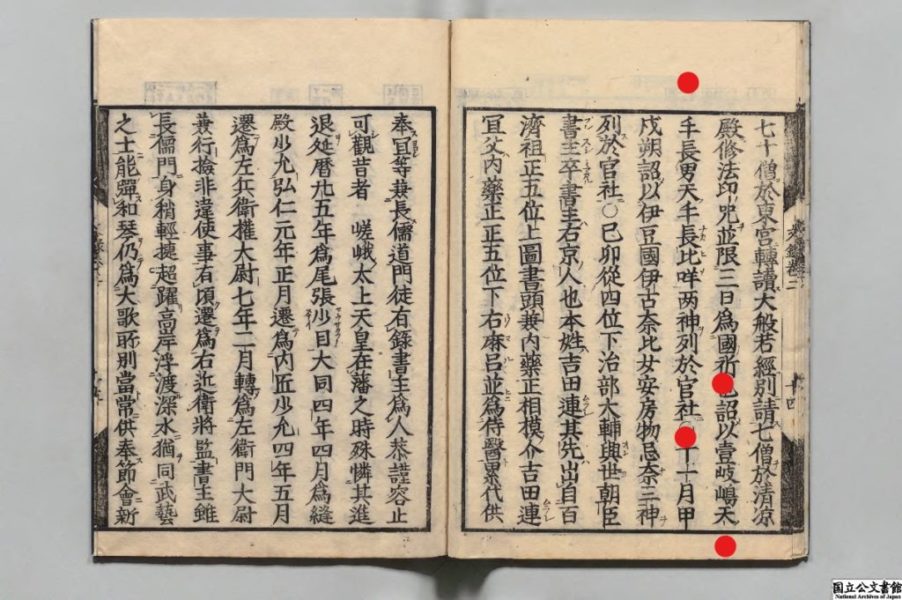
Legends in "Dainihonkoku Ichinomiya ki"
"Ichinomiyaki of Japan" (edited in the second volume of "Group Documents輯" and "The Divine Club" Volume 23)
It is said that it was established in the Muromachi period in the "Ichinomiya List" in Japan.The name of the shrine and the god of the festival are written.
"Ten te eldest son shrine Tenki Kanegami Ichio Sanuki Ishida-gun" and the festival god is "thought Kanegami" This is the same as our festival god
【原文参照】国立公文書館デジタルアーカイブ『大日本国一宮記』室町時代の成立 「群書類従」刊本(跋刊)[旧蔵者]昌平坂学問所
https://www.digital.archives.go.jp/DAS/meta/listPhoto?LANG=default&BID=F1000000000000037297&ID=M1000000000000054068&TYPE=&NO=映像利用
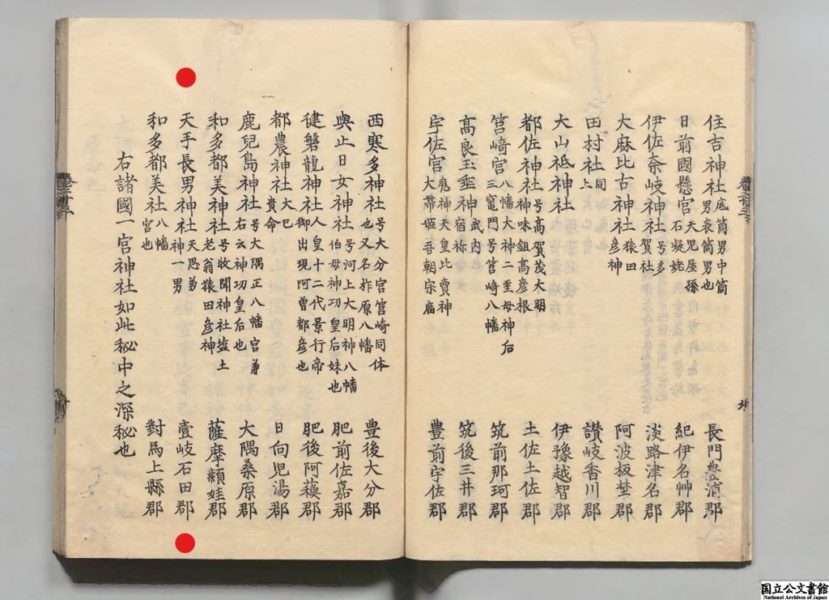
The theory that it is the original Uchinajin Taisha "Tenge-son Shrine" and "Ikikuni Ichinomiya" has become powerful, and it sits right next to the ruins of the royal capital of one branch country (Iki country) and Iki Because the country was the place to pay 鑰 of the government office and the seal of the national government office, it has the company name of "Mark 鑰 Daimyegami" it has a stately long time.
"Rai" (90-degree bow) at Ko shrine (ko shrine)
